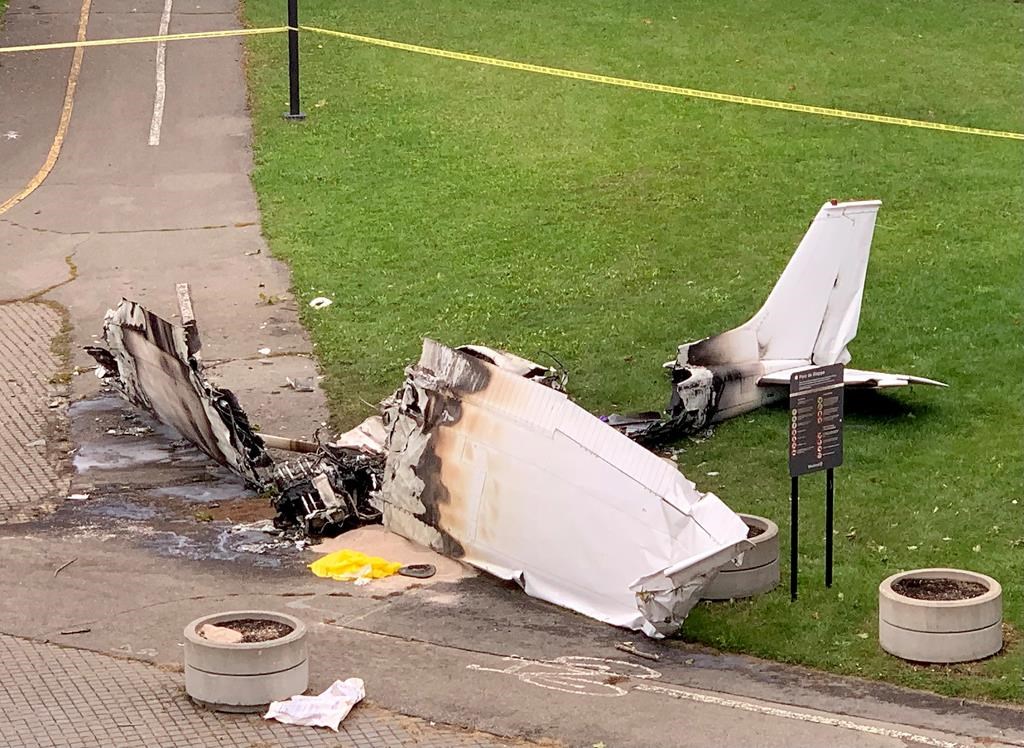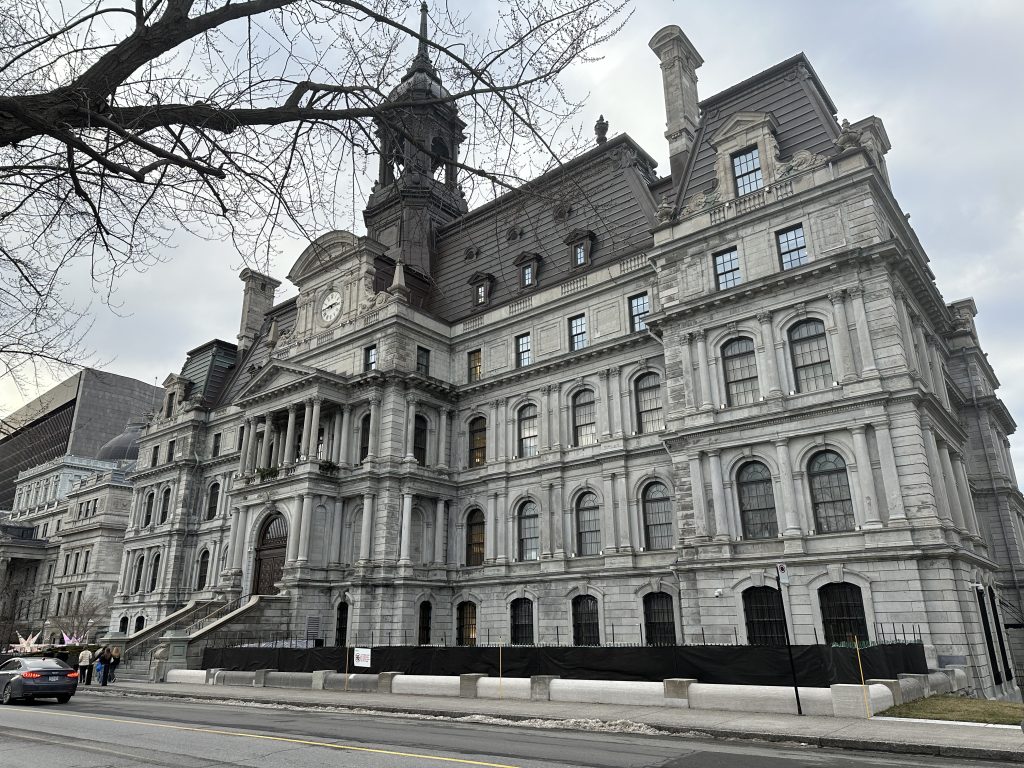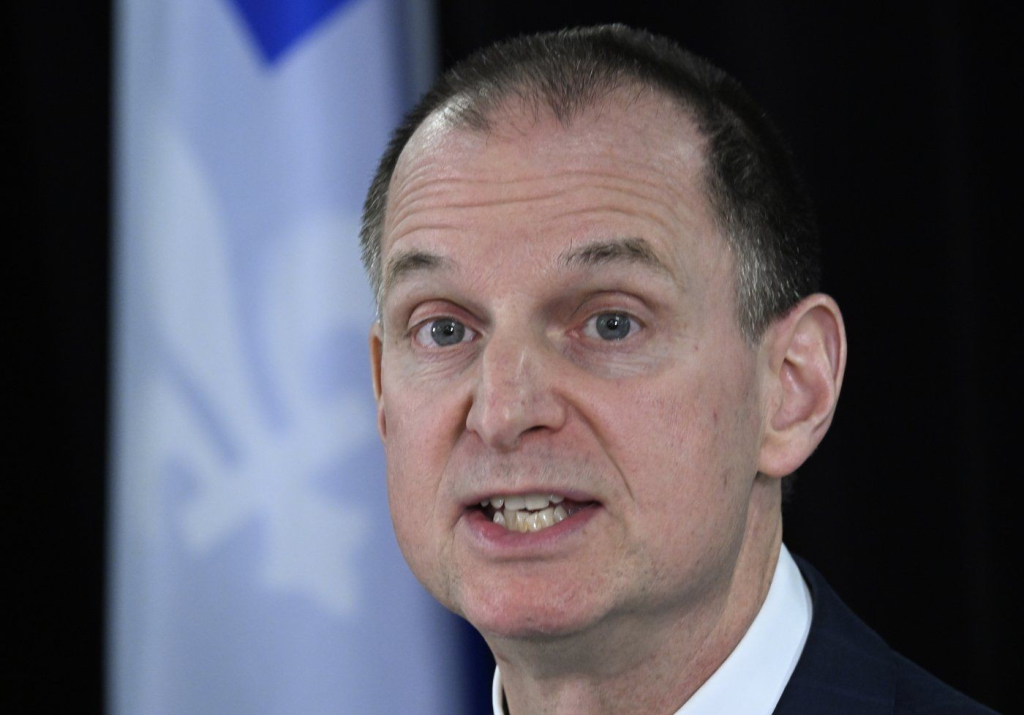Little room for error when towing banners by plane, ex pilot says after Quebec crash

Posted October 4, 2021 5:47 pm.
Last Updated October 4, 2021 5:48 pm.
MONTREAL _ It’s too soon to say what caused a plane pulling a marriage proposal banner to crash near Old Montreal over the weekend, but there are “certain dangers” that come with towing banners by air, an ex-pilot said Monday.
Julien Placa, who still flies recreationally, said in an interview from Montreal that most crashes are due to a “combination of factors,” adding that there’s rarely one single reason why a plane goes down.
Flying, he said, relies on two factors: power from the engines and lift from the wings.
Towing banners, he explained, means engines have to work harder to maintain minimum speeds, putting them at risk of losing lift and stalling, and because the planes fly low, there is little time to react if things go wrong.
“We’re within speeds that are very low, so we’re always at the limit of what we call a plane that can stall, that’s not flying fast enough,” he said.
A passenger died and the pilot was seriously injured in Saturday’s crash, which occurred around 6 p.m. near Old Montreal and near the site of a busy music festival.
The Transportation Safety Board said Monday the plane’s engines would be sent to a lab in Ottawa for analysis, adding that it was still too soon to determine what caused the crash.
While Placa said towing banners is safe under “well-managed” conditions, he said it’s still riskier than flying the plane alone.
Without knowing the circumstances, he said a number of things could have caused the plane to get into trouble: too much humidity in the air, which can cause ice to build up in the carburetor; engine trouble; human error; too much weight in the plane; or a low cloud cover, which would require the aircraft to fly closer to the ground to make the banner visible.
“Accidents happen, and they happen from a combination of circumstances,” Placa said. “It’s rarely just one reason that causes an accident.”
Montreal La Presse and other media outlets have identified the pilot as Gian Piero Ciambella, owner of the aerial advertising company Aerogram.
Placa said Ciambella was the one who taught him to fly planes pulling banners about 15 years ago, and he said his former mentor has decades of experience and was always safety conscious.
“The way he taught me about banners, it was always in terms of safety above all, and also thinking about the safety of people on the ground,” he said.
While the two haven’t spoken in close to a decade, Placa said Ciambella has an “excellent” reputation among pilots. But accidents can happen, especially when it comes to the added challenge of towing, he said.
“It’s still a flight with certain dangers,” he said, adding that the first thing pilots learn when something goes wrong is to detach the banner they are pulling.
The plane involved in the crash was a Cessna 172, which Placa described as a popular plane that is very easy to fly.
He said that in all his years of flying, with and without banners, he’s never had to make a forced landing _ unlike Ciambella, who made headlines in 2006 when he was forced to land a plane on a busy Montreal street.
Despite the risks, Placa maintains that flying is a safe activity _ “safer than crossing the road on foot or taking a car,” he said.
This report by The Canadian Press was first published Oct. 4, 2021.








